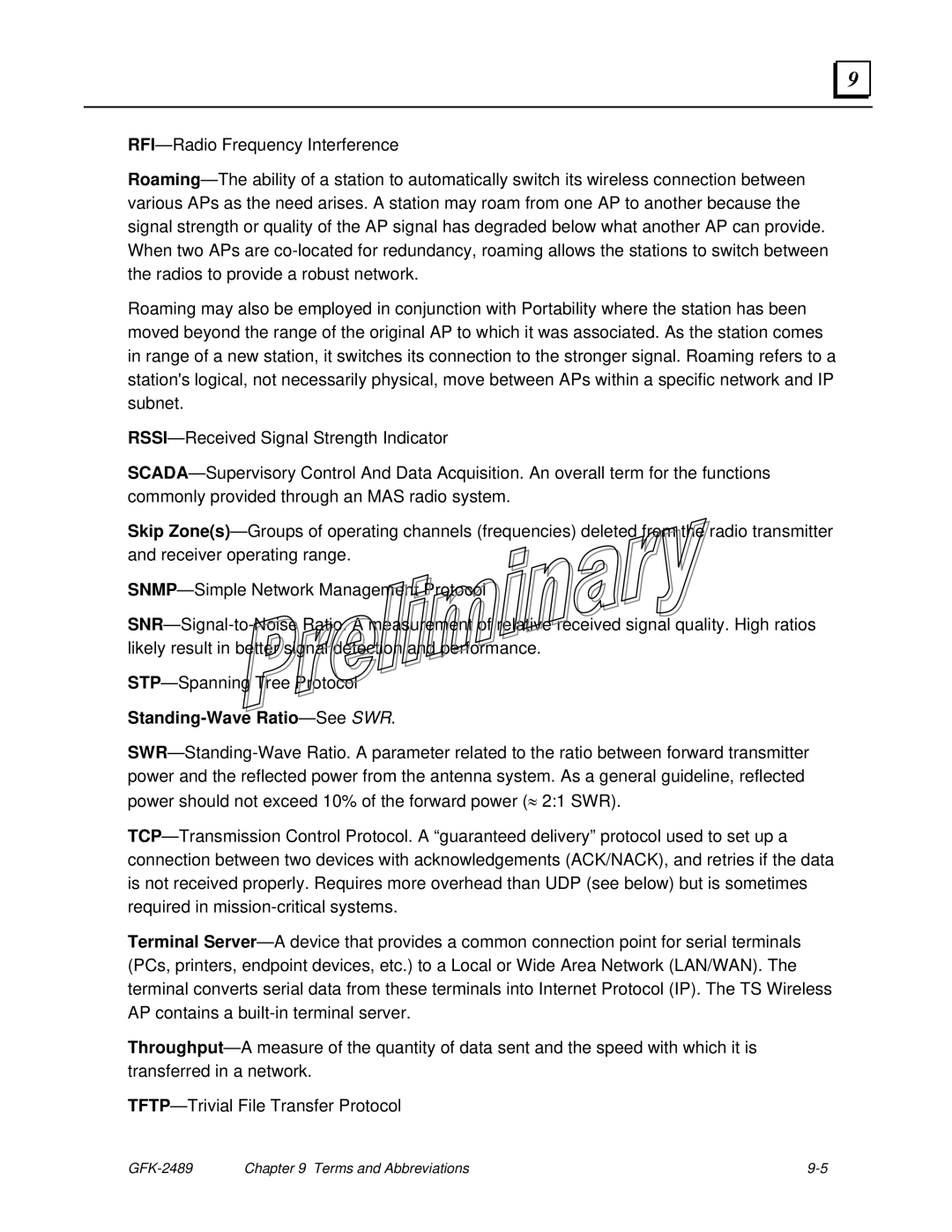RFI—Radio Frequency Interference
Roaming—The ability of a station to automatically switch its wireless connection between various APs as the need arises. A station may roam from one AP to another because the signal strength or quality of the AP signal has degraded below what another AP can provide. When two APs are co-located for redundancy, roaming allows the stations to switch between the radios to provide a robust network.
Roaming may also be employed in conjunction with Portability where the station has been moved beyond the range of the original AP to which it was associated. As the station comes in range of a new station, it switches its connection to the stronger signal. Roaming refers to a station's logical, not necessarily physical, move between APs within a specific network and IP subnet.
RSSI—Received Signal Strength Indicator
SCADA—Supervisory Control And Data Acquisition. An overall term for the functions commonly provided through an MAS radio system.
Skip Zone(s)—Groups of operating channels (frequencies) deleted from the radio transmitter and receiver operating range.
SNMP—Simple Network Management Protocol
SNR—Signal-to-Noise Ratio. A measurement of relative received signal quality. High ratios likely result in better signal detection and performance.
STP—Spanning Tree Protocol
Standing-Wave Ratio—SeeSWR.
SWR—Standing-Wave Ratio. A parameter related to the ratio between forward transmitter power and the reflected power from the antenna system. As a general guideline, reflected power should not exceed 10% of the forward power (≈ 2:1 SWR).
TCP—Transmission Control Protocol. A “guaranteed delivery” protocol used to set up a connection between two devices with acknowledgements (ACK/NACK), and retries if the data is not received properly. Requires more overhead than UDP (see below) but is sometimes required in mission-critical systems.
Terminal Server—A device that provides a common connection point for serial terminals (PCs, printers, endpoint devices, etc.) to a Local or Wide Area Network (LAN/WAN). The terminal converts serial data from these terminals into Internet Protocol (IP). The TS Wireless AP contains a built-in terminal server.
Throughput—A measure of the quantity of data sent and the speed with which it is transferred in a network.
TFTP—Trivial File Transfer Protocol
GFK-2489 | Chapter 9 Terms and Abbreviations | 9-5 |

